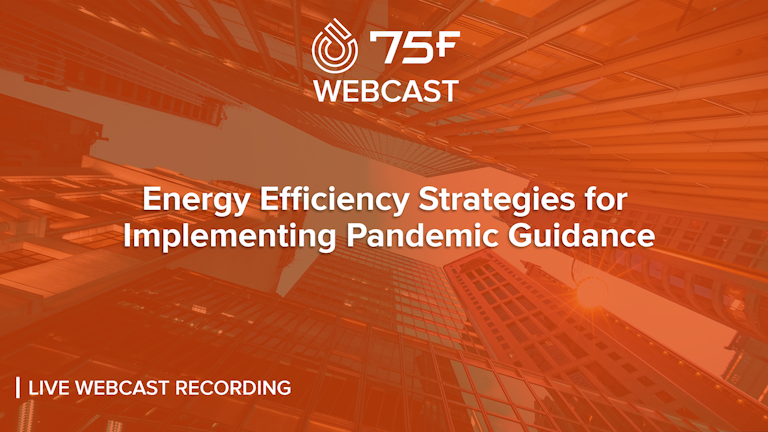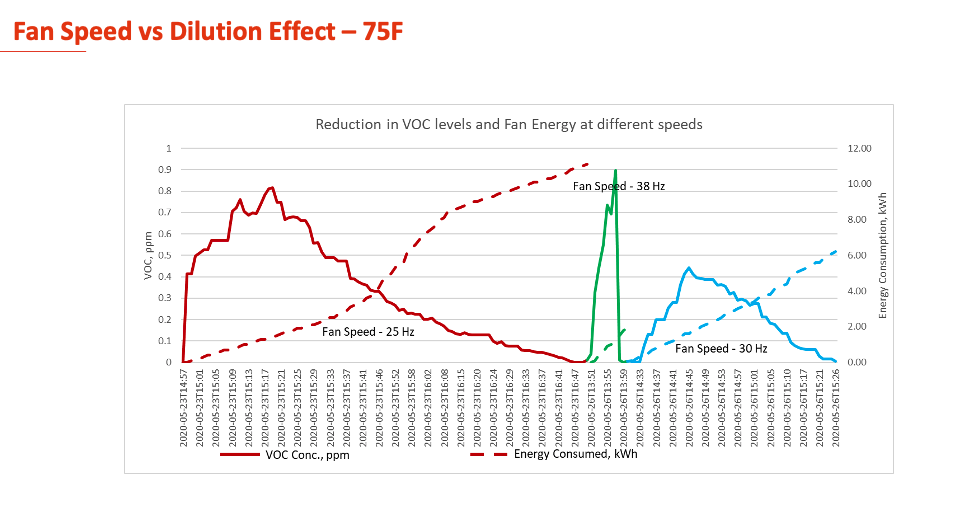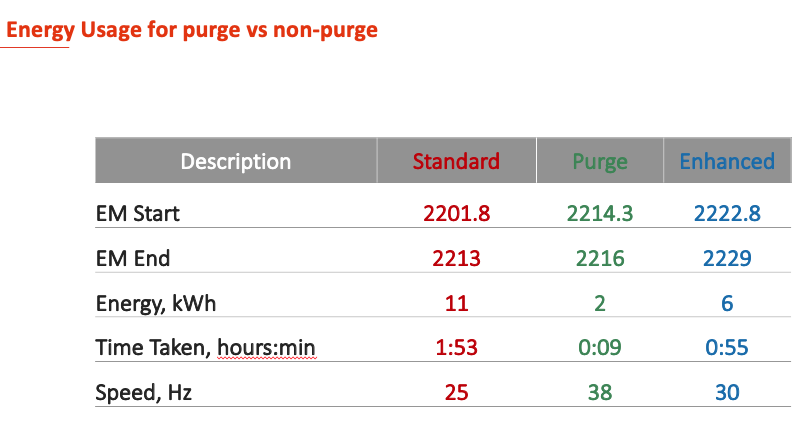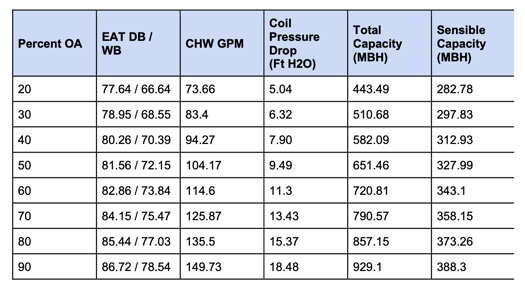
Healthier Buildings Series: Energy Efficiency Strategies for COVID-19
75F’s second session in the Healthier Buildings webcast series covers the energy efficiency implications of COVID-19 indoor mitigation strategies and offers viewers guidance on saving energy where possible under these extreme conditions.
Your webcast hosts are 75F’s founder and CEO, Deepinder Singh, and Dr. Mark Modera. Modera is the Director of the Western Cooling Efficiency Center (WCEC), as well as the Energy and Efficiency Institute at UC Davis.
Current guidelines from the CDC and ASHRAE advise facility managers and building owners to flush their buildings with outdoor air (OA) for two hours pre- and post-occupancy, as well as utilize enhanced ventilation during occupied hours.
While these actions will increase energy use, webcast hosts suggest that leaving building temperatures in setback mode overnight and during pre- and post-occupancy purges; directing enhanced ventilation to occupied zones; and proper duct sealing may help lower energy use.
Dilution Ventilation and Its Effectiveness
Dilution ventilation is at the center of CDC and ASHRAE guidelines. The thesis is that introducing higher ratios of OA into a space will lower the concentration of infectious viral particles, thus lowering the risk of prolonged occupant exposure.
But is it effective?
75F conducted an experiment that measured volatile organic compound (VOC) levels from paint thinner that had evaporated from cotton balls and recorded how long it took for levels to lower to baseline at various fan speeds. The experiment also recorded how much energy the fans used at each speed.
To record VOC levels 75F used the Smart Stat, which measures for temperature, humidity, light, occupancy, sound, CO2, and VOCs. Note that 75F used VOCs for this experiment because technology does not yet exist to detect viral particles.
The fan used in the experiment was an air handling unit (AHU) running at 25 Hz, or at 50 percent speed. The experiment was repeated with the fan at 60 percent speed, and then again at 80 percent speed.
When the fan ran at 50 percent speed, it took two hours for VOC levels to decay to baseline.
When the fan ran at 60 percent speed, it took about one hour for VOC levels to decay to baseline.
At the fastest speed of 80 percent, it took only nine minutes for VOCs to decay.
At these rates, fan speeds can be compared to standard operation, enhanced ventilation, and purge modes. In the graphic below, the dashed line indicates the amount of cumulative energy the fan is consuming, and the solid line indicates VOC levels.


What do These Guidelines Mean for Energy Efficiency?
Webcast presenters estimate that increasing OA ventilation will increase energy usage somewhere between two and three times. Presenters base this estimation on data from ASHRAE, pictured below, which demonstrates the additional required cooling capacity and gpm required if the same coil experiences different entering air conditions.
In this example, increasing ventilation from 20 percent OA to 90 percent doubles the required chilled water, triples the coil pressure drop, and requires just over twice the amount of cooling source from the chiller.
“In a typical building that has chillers, because you’ve tripled the coil pressure drop, your pumps are going to be working a lot harder,” Singh said, “and that’s a significant portion of energy usage in those types of buildings.”

Strategies to Consider Adopting for Energy Efficiency
Consider implementing only a pre-occupancy purge instead of pre and post.
Keep temperatures in setback during purges.
Deliver enhanced ventilation to parts of the building that are occupied.
Seal ducts to remedy leaks in supply and exhaust ducts.
For the first consideration, Singh recommends that if your building is going to be truly unoccupied after business hours – meaning no overnight cleaners will be there and employees aren’t staying late – it may be sufficient to only implement the first of the two purges and forego the second.
When you are running a purge, keeping temperatures in setback means no conditioning is required because occupants are not currently in the building.
During the enhanced ventilation phase of the day – or, when occupants are in the building – equipment capacity and the weather matters. Most system equipment is not sized to be running with 100 percent OA all the time, so what you’ll see is a decrease in the OA damper position for the amount of air that can be brought in while still maintaining good indoor air conditions.
During the occupied period, facility managers can save energy by not utilizing enhanced ventilation in unoccupied zones, and instead redirecting airflow to occupied spaces. When doing this, Singh says, make sure to open dampers to reduce pressure losses.
All the measures outlined so far are packaged together in 75F’s Epidemic Mode, a custom sequence of operations designed to follow CDC and ASHRAE guidelines and simultaneously save energy where possible.
Energy and Health Implications of Leaking Ducts
Leaking ducts can be a significant source of energy loss, Modera points out, and can lessen the amount of fresh air that reaches a space. Additionally, leaks can reduce the concentration of COVID-19 particles in exhaust air, meaning fewer viral particles are expelled from the building.
During the webcast presentation, Modera provides a sample calculation that assumes 20 percent duct leakage at full load – 10 percent upstream of variable air volume (VAV) boxes, and 10 percent downstream. With a full load, Modera concludes that about 93 percent of OA reaches the room, while at 50 percent load, that number drops to 83 percent.
“Once you take the fresh air and leak some of it into the return plenum, it never makes it to the space,” Modera said, “so you’re not getting as much out of the building, which is the goal here.”
Modera’s energy analysis of these numbers concludes that at a full load, it would take 20 percent more fan energy to deliver the same amount of air as an air-tight system. In contrast, at a half load, it would take 58 percent more fan energy.
Modera concludes during the webcast that facility managers can address duct leaks – and one way to do that is to remove ceiling tiles and seal leaks manually. Alternatively, Aeroseal technology allows for remote leak sealing by deploying fog while pressurizing the system, causing the fog to deposit into leaks and seal.�
Be sure to join the next session of our Healthier Buildings series, where we discuss partial occupancy and ventilation with Chris Jones, Product Manager of Actuator Solutions at Belimo; Phil Zito of Building Automation Monthly; and Bob French, Chief Evangelist at 75F.











